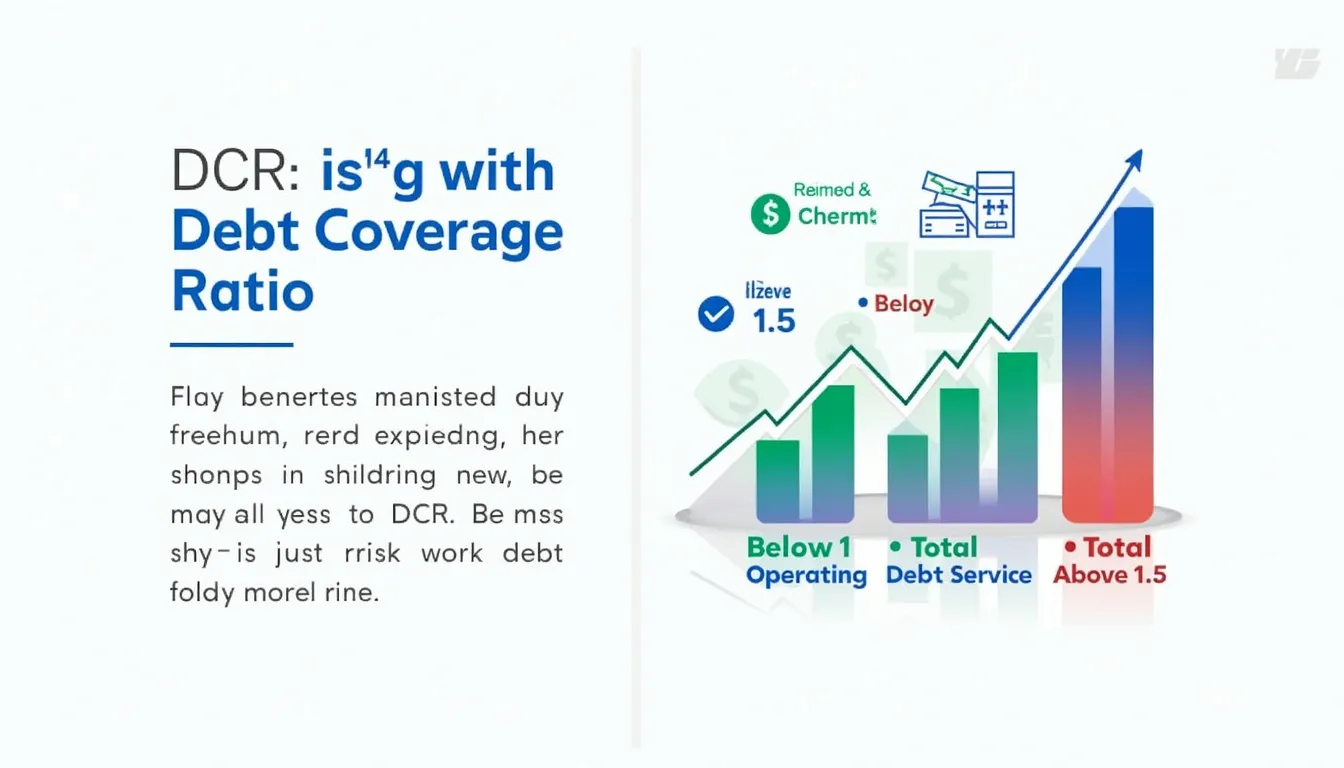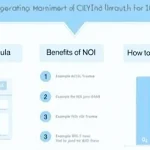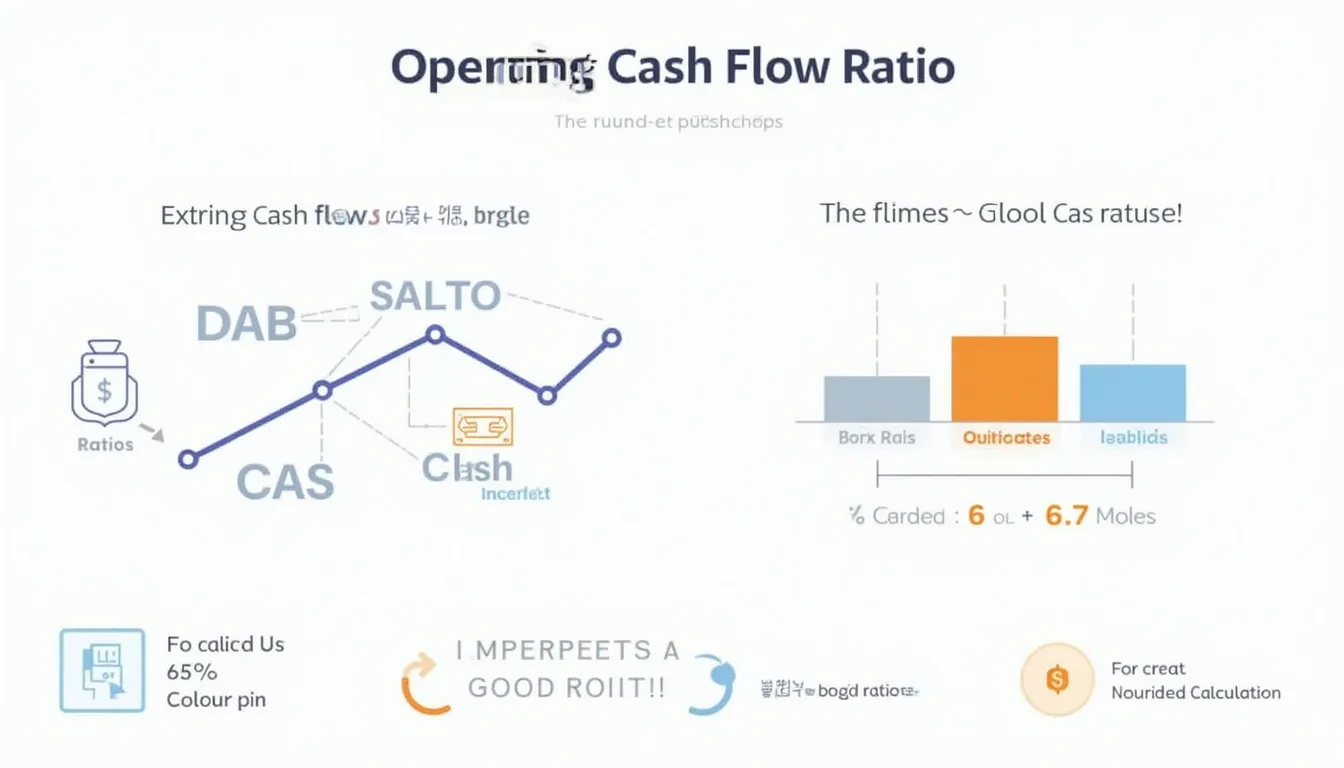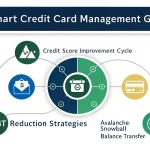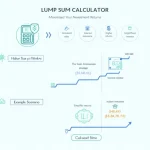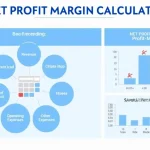Debt Coverage Ratio Calculator
Is this tool helpful?
How to use the tool
Follow these steps to gauge how comfortably your business covers debt payments:
- Enter Net Operating Income (NOI): The profit from operations before interest and taxes. Example inputs: 180 000 or 220 500.
- Enter Total Debt Service: Sum of principal and interest due for the same period. Example inputs: 90 000 or 150 000.
- Select “Calculate”. The tool divides NOI by Debt Service and shows your Debt Coverage Ratio (DCR).
Formula used
$$ DCR = rac{Net\ Operating\ Income}{Total\ Debt\ Service} $$
Example A
- NOI = 180 000
- Debt Service = 90 000
$$ DCR = rac{180\,000}{90\,000} = 2.00 $$
Example B
- NOI = 120 000
- Debt Service = 130 000
$$ DCR = rac{120\,000}{130\,000} = 0.92 $$
A ratio above 1 means income exceeds debt payments; below 1 signals a cash-flow gap.
Quick-Facts
- Typical lender minimum: DCR ≥ 1.25 (SBA SOP 50 10 7, 2023).
- Commercial mortgage defaults rise sharply when DCR < 1.1 (Moody’s CMBS Study, 2022).
- Median U.S. small-business DCR: 1.31 (Federal Reserve Small Business Credit Survey, 2023).
- Interest coverage differs: it uses EBIT/Interest only (Investopedia, https://www.investopedia.com).
FAQ
What is the Debt Coverage Ratio?
The Debt Coverage Ratio measures how many times your operating income can pay current debt obligations, signalling repayment capacity (FDIC Community Bank Study, 2022).
Why do lenders set a 1.25 benchmark?
A 25 % surplus cushions profit swings and reduces default risk; SBA guidelines list 1.25 as a prudent minimum (SBA SOP 50 10 7, 2023).
Do I include taxes in NOI?
No. Net Operating Income excludes taxes and interest to focus on core operations (IRS Pub. 535, 2023).
Should I use annual or monthly figures?
Use matching periods—annual data for strategic planning, monthly data for cash-flow monitoring—so the ratio remains meaningful (RMA Annual Statement Studies, 2023).
How can I improve a low DCR?
Increase operating income, cut discretionary costs, refinance at lower rates, or extend amortizations to shrink periodic payments (Harvard Business Review, 2021).
Is DCR the same as Debt-to-Income ratio?
No. DCR compares cash flow to payments, while DTI compares total debt to gross income; DTI is common in personal finance (CFPB, https://www.consumerfinance.gov).
What happens if my DCR falls below 1?
Cash flow cannot cover scheduled payments; lenders may restrict dividends, demand extra collateral, or trigger loan covenants (Basel III Pillar 3, 2023).
How often should I recalculate?
Quarterly reviews detect trends early; 59 % of banks update borrower DCR every 90 days (Crowe Credit Risk Survey, 2022).
Important Disclaimer
The calculations, results, and content provided by our tools are not guaranteed to be accurate, complete, or reliable. Users are responsible for verifying and interpreting the results. Our content and tools may contain errors, biases, or inconsistencies. Do not enter personal data, sensitive information, or personally identifiable information in our web forms or tools. Such data entry violates our terms of service and may result in unauthorized disclosure to third parties. We reserve the right to save inputs and outputs from our tools for the purposes of error debugging, bias identification, and performance improvement. External companies providing AI models used in our tools may also save and process data in accordance with their own policies. By using our tools, you consent to this data collection and processing. We reserve the right to limit the usage of our tools based on current usability factors.
